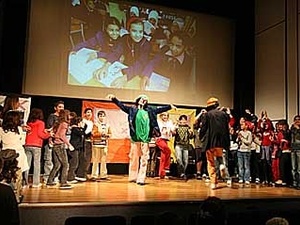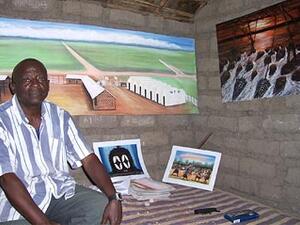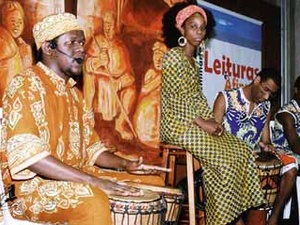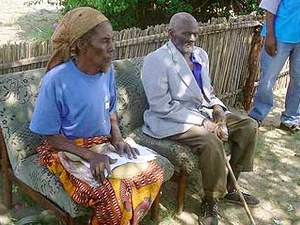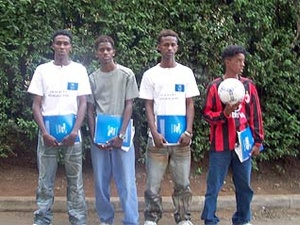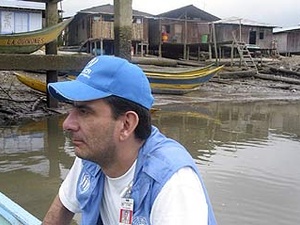Remembering Spain's pain of exile
Remembering Spain's pain of exile

Fragment of a poster from the exhibition called "Exilio" helding at Madrid's Palacio de Cristal in October 2002.
MADRID, Spain (UNHCR) - You don't have to be an art lover to go on a flight of fantasy with Pablo Picasso, Salvador Dalí and Luis Buñuel. In fact, history buffs would feel just as comfortable in a recent exhibition that focuses not on the artists' dream-like, surrealist works, but on their nightmarish flight from the Spanish Civil War.
Picasso, Dalí and Buñuel are just part of the attraction at "Exilio", an exhibition currently running at Madrid's Palacio de Cristal. Organised by the Pablo Iglesias Foundation, it tells the story of Spanish exile that started in 1936 and ended in 1978, when Spain became a modern constitutional monarchy and democracy. The exhibition pays tribute to the thousands of Spanish refugees who kept the ideals of constitutional legitimacy and democracy alive, as well as to the countries that received them.
"Twenty years ago, 'Exilio' would have received a very different welcome," said Ana Ramírez, Deputy Commissioner of the exhibition. "But now Spain has a history of democracy, and that makes things different."
Using photographs, documents and personal belongings, the exhibition unfolds chronologically in six parts. Part 1 - "The Withdrawal" - covers the period from 1936 to 1939. It shows Franco winning the last battles, sending civilians and the Republican Army fleeing towards the French border and to North Africa. Some are put in internment camps. This section also deals with refugee children.
In Part 2 - "The Diaspora" - the start of World War II makes many exiles move on to other countries in Latin America, Asia and Russia. By Part 3 ("Second Defeat"), the Nazis have occupied France and installed the Vichy regime. Spanish exiles participate in the French resistance movement. Many are placed in internment camps while suspected Communists or socialists among them are sent to Nazi extermination camps.
Part 4 - "Trasterrados" (long-term/permanent exiles) - examines how the allied forces "deceived" the Spanish exiles after the war, leaving Franco in power and admitting his government into the United Nations in 1955. The hopes of the Republican Government in Exile to return to Spain are dashed.
Part 5 - "The Returnees" - looks at anti-Franco activities, the transitional period after his death in 1975, and the end of the Republican Government in Exile. King Juan Carlos' signing of the new Constitution in 1978 signals to the exiles that it is finally safe to go home.
"Exilio" ends with Part 6, "The Wandering Numancia", which analyses the contribution of Spanish exiles in local and international cultural life. Besides Picasso, Dalí and Buñuel, other names in the long list of Spanish artists and writers in exile include Rafael Albertí, María Zambrano, Concha Méndez, Joan Miró and Juan Ramón Jiménez.
Explaining the exhibition's relevance today, Deputy Commissioner Ramírez said, "There is a lot of ignorance about this part of our recent history, especially among young people. 'Exilio' makes them realise that the refugees we often see these days are not only issues for faraway countries, but that such events also happened here in Spain not too long ago."
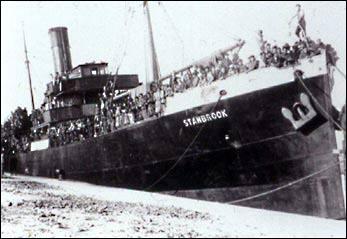
Spanish refugees in the harbour of Alicante, leaving for North Africa in 1939.
She added, "The exhibition also has an important task in raising awareness about the situation of many people who are coming to Spain these days. Maybe not all of them are fleeing civil war, but they do come from situations of misery and poverty. There has been criticism of France with regard to the reception of the Spanish exiles in the late 1930s, but 'Exilio' shows that it was a real problem for them to be confronted suddenly with almost half a million refugees. It is a difficult problem, and in certain ways it is something that we are experiencing now."
"Exilio" is on at the Palacio de Cristal (Crystal Palace), Retiro Park, in Madrid, Spain until December 1. Admission is free.
By Karin de Gruijl
UNHCR Spain


